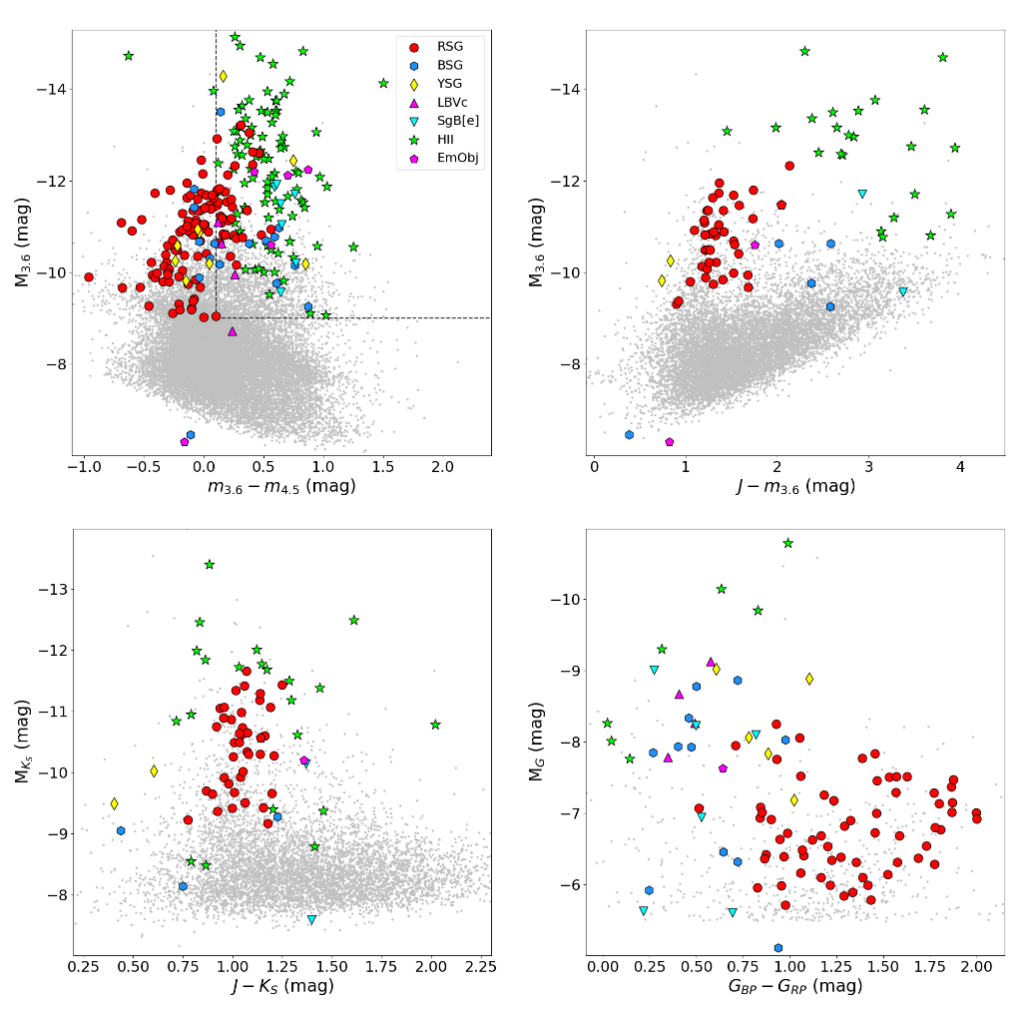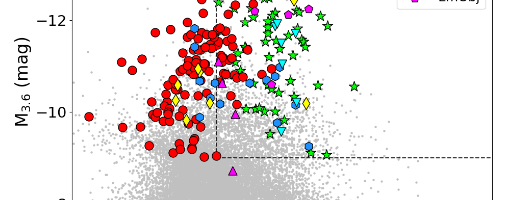Investigating episodic mass loss in evolved massive stars: I. Spectroscopy of dusty massive stars in ten southern galaxies
A.Z. Bonanos, F. Tramper, S. de Wit, E. Christodoulou, G. Munoz-Sanchez, K. Antoniadis, S. Athanasiou, G. Maravelias, M. Yang, E. Zapartas
The ASSESS project aims to determine the role of episodic mass-loss in the evolution of massive stars. As a first step, we construct a catalog of spectroscopically identified dusty, evolved massive stars in ten southern galaxies for which Spitzer point-source catalogs are available. We conducted multi-object spectroscopy of dusty massive star candidates in these galaxies (spanning Z = 0.06-1.6 Zo) using the VLT. We obtained 763 spectra in WLM, NGC 55, NGC 247, NGC 253, NGC 300, NGC 1313, NGC 3109, Sextans A, M83 and NGC 7793. The targets were selected using their Spitzer photometry, by prioritizing targets with a strong infrared excess. We determined a spectral classification for each target. Additionally, we used archival images from the HST to provide a visual classification for 80 targets, as a star, cluster, or galaxy. We provide a catalog of 541 spectroscopically classified sources including 185 massive stars, of which 154 are newly classified massive stars. The catalog contains 129 red supergiants, 27 blue supergiants, 10 yellow supergiants, four luminous blue variable candidates, seven supergiant B[e] stars and eight emission line objects. Evidence for circumstellar dust is found in 24% of these massive stars, based on their infrared colors. We report a success rate of 28% for identifying massive stars among our observed spectra, while the average success rate of our priority system in selecting evolved massive stars was 36%. Additionally, the catalog contains 21 background galaxies (including AGN and quasars), 10 carbon stars and 99 HII regions. We measured the line ratios [NII]/Ha and [SII]/Ha for 76 HII regions and 36 other spectra with nebular emission-lines, thereby identifying eight sources with shocked emission. We present the largest catalog of evolved massive stars and in particular of red supergiants in nearby galaxies at low Z beyond the Local Group.

